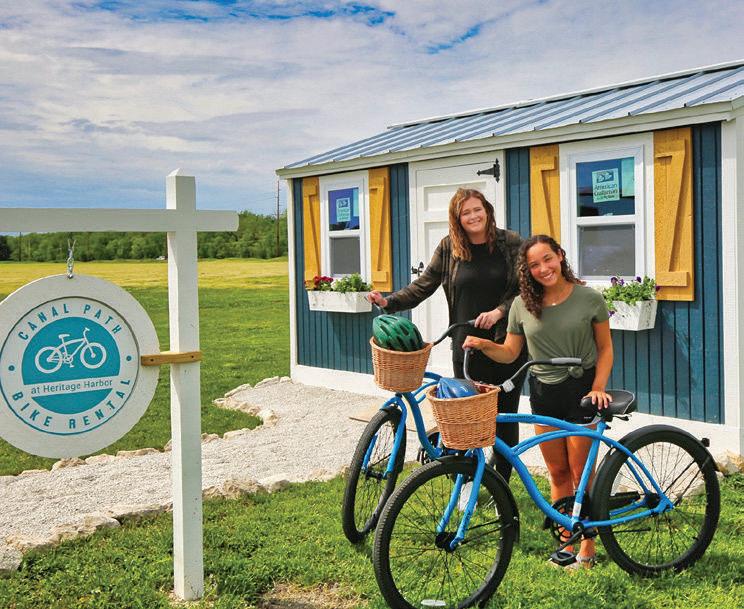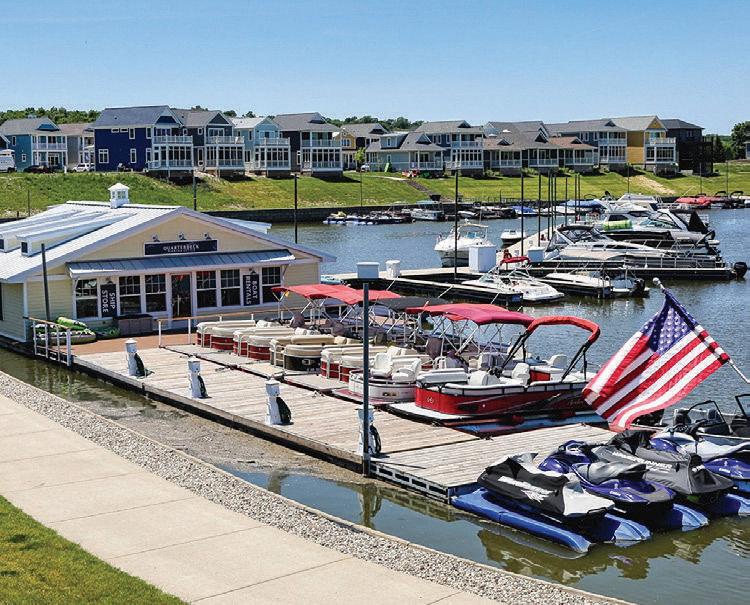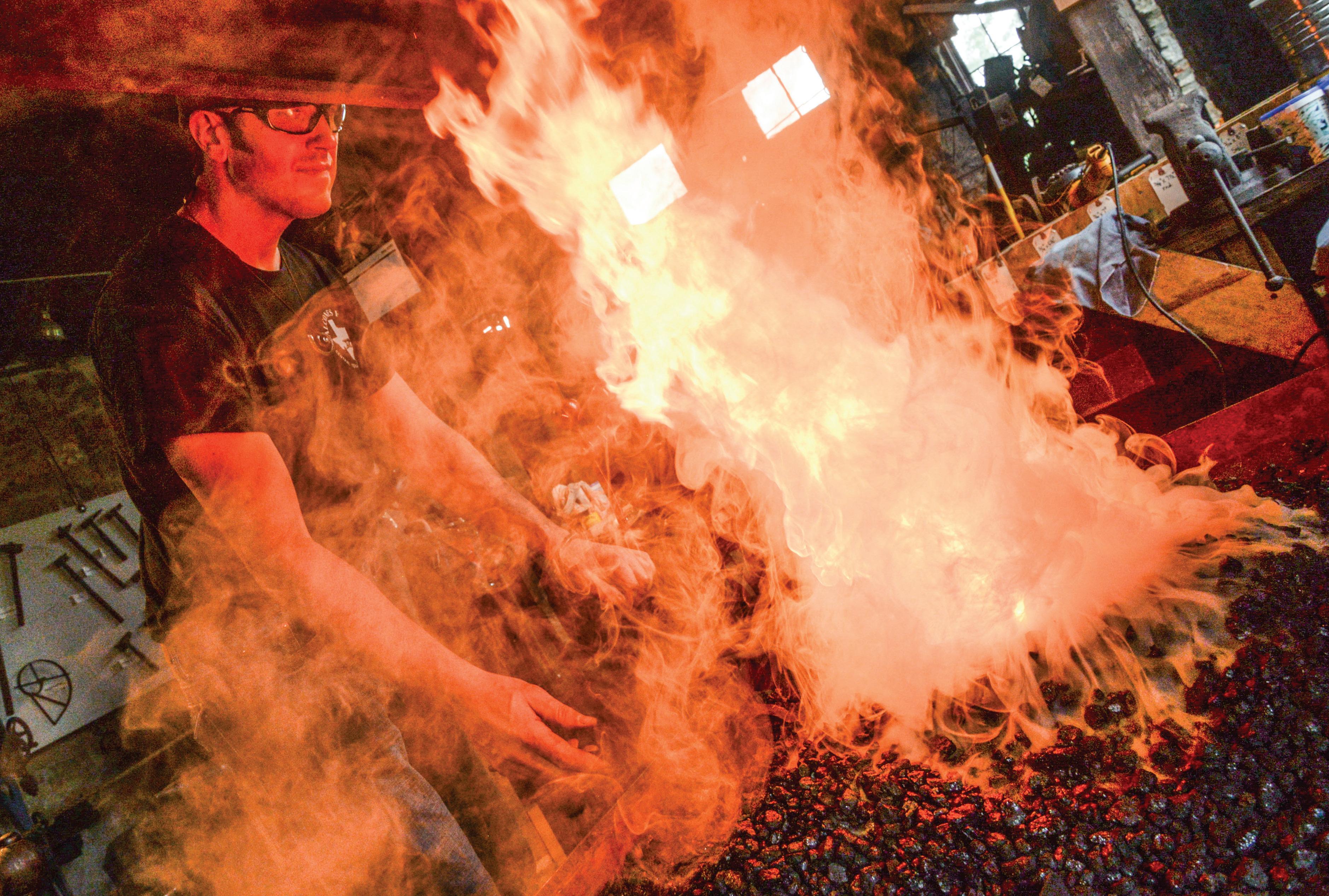
5 minute read
‘KING OF ALL TRADES’
| Made In SRC |
Modern blacksmith keeps history alive with fire and forging demonstrations
Story and Photos by Steve Stout
here was a time in history when blacksmiths — faces, arms and clothes streaked with soot — were some of the most valued workers in communities both large and small.
These days, Doug Eichert, a modern smith from Somonauk, is keeping the noble profession alive with iron pounding on weekends through the fall for La Salle County Historical Society visitors in Utica.
“I was naturally drawn to fire from an early age,” explains Eichert. “It didn’t matter if it was a fireplace or bonfires, I always enjoyed tending them. I was also fortunate to watch some blacksmiths and farriers (shoer of horses) demonstrate in my youth, I think these were formative experiences.
“I became a goldsmith working with gemstones and precious metal jewelry; you know gold, platinum and silver. There’s an old Indian saying about 100 blows from the goldsmith being equal to just one from the
Opposite page: Doug Eichert works over a coal forge fire during a blacksmith demonstration at the La Salle County Historical Society in Utica. Below: Doug Eichert works iron in the historical society’s coal forge and shows a glowing, red-hot piece of metal to young onlookers. blacksmith. My first experience of taking a hammer to hot steel was revelatory and the further I fell into it, the more it subverted my notion of what a precious metal really is.”
The village blacksmith commented on how much he enjoys the weekend forging demonstrations.
“They are invaluable to me,” says Eichert. “First off, growing up in La Salle County and having this close relationship with the people and area makes it just seem right that I’m here. These demonstrations align with my educational pursuits — namely to educate the public of what blacksmithing was, what it is today and where it’s going.”
He admits he understands that many folks think “blacksmithing is a lost art,” but notes forging is still used by many craftsmen today, however “in a less recognizable fashion.”
“Blacksmiths in developed countries no longer have the world on their shoulders to upkeep the world’s industries and thus allowed the craft to expand out more widely towards the arts,” he says. “While demonstrating, visitors have the opportunity to witness the process and gain a greater understanding and appreciation for the work that goes into a hand-forged piece.”
Within his demonstrations, Eichert tries to convey how vital the blacksmith’s role was to the tradespeople and communities that depended on the smith’s tools and hardware. Their contribution was one of the most important in civilization and helped give the blacksmith the title, “king of all trades,” he explains.
He notes how “our language is rich with idioms borrowed from blacksmithing processes, for instance, ‘Strike while the iron is hot’ refers to not missing a golden opportunity in life and relationships. In terms of conveying skills, there’s a multitude of them, but they all revolve around taking this obstinate cold, hard metal, heating it up until the metal becomes incandescent and working it by hammer and hand. Spatially, I try to convey the uniqueness of this technology and the many skills involved.
“Blacksmithing to me is the most direct and exhilarating process of creating. I get to do it working with the basic elements: fire, water, wind, coal, iron and by the sweat of my brow.”

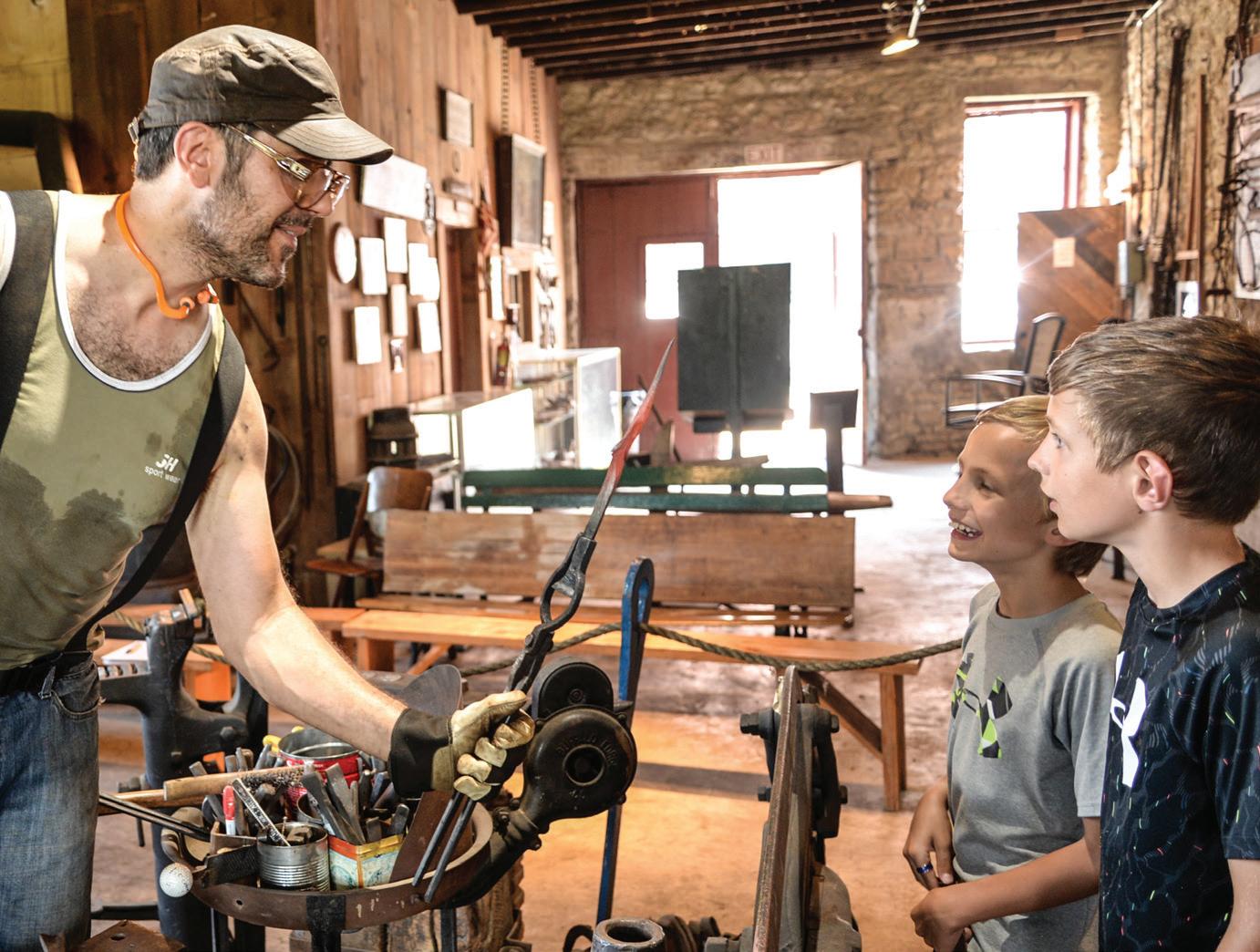
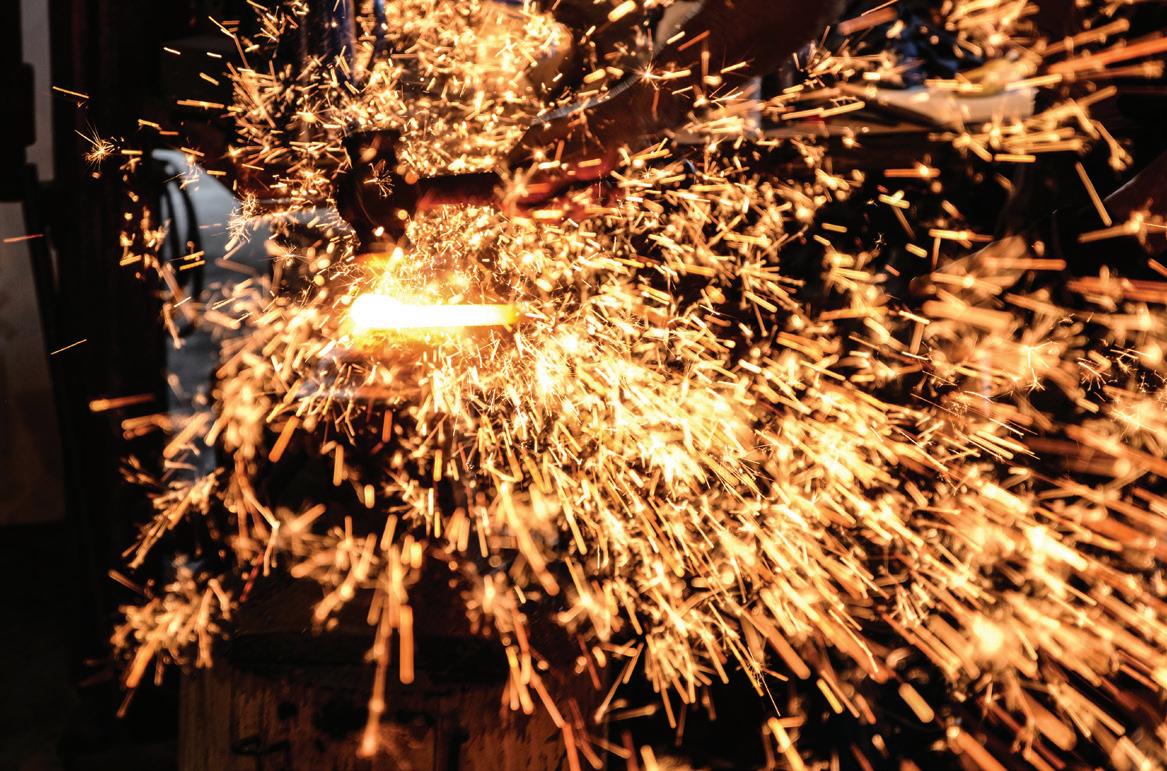
La Salle County Historical Society Vice President Susan Thornton gives high marks to the passionate Eichert and his exhibitions.
“Doug — as an artist and craftsman — brings new energy to the society’s blacksmith shop with his enthusiasm and expertise,” says Thornton. “He always makes personal and positive contact with our museum visitors in an informative and interesting way with his modern approach to preserving historic blacksmith techniques. Our organization is lucky to have such a tremendous asset like Doug working regularly for us.”
Eichert, a board member of ArtistBlacksmith’s Association of North America, says he was lucky to be hired by the local society to work his craft in such a historic blacksmith shop. (Its legacy dates back to 1892.) The La Salle County Historical Society bought the building in 1972 and has honored the ancient craft of blacksmithing through various exhibits.
Philosophizing about his work, the Starved Rock Country-area blacksmith concludes, “In this day and age, as a developed country, our society has collectively moved away from hand-work, we press a button and a box containing every conceivable object mysteriously appears at our doorstep. Yet in many respects, not much has changed; people still want a connection to the blacksmith and something hand-forged. I think that’s one of the most satisfying returns from my craft, that is to be a bridge for such a riveting story that isn’t finished being told.”
For details on seeing one of Eichert’s demonstrations, visit www.lasallecountyhistoricalsociety.org.
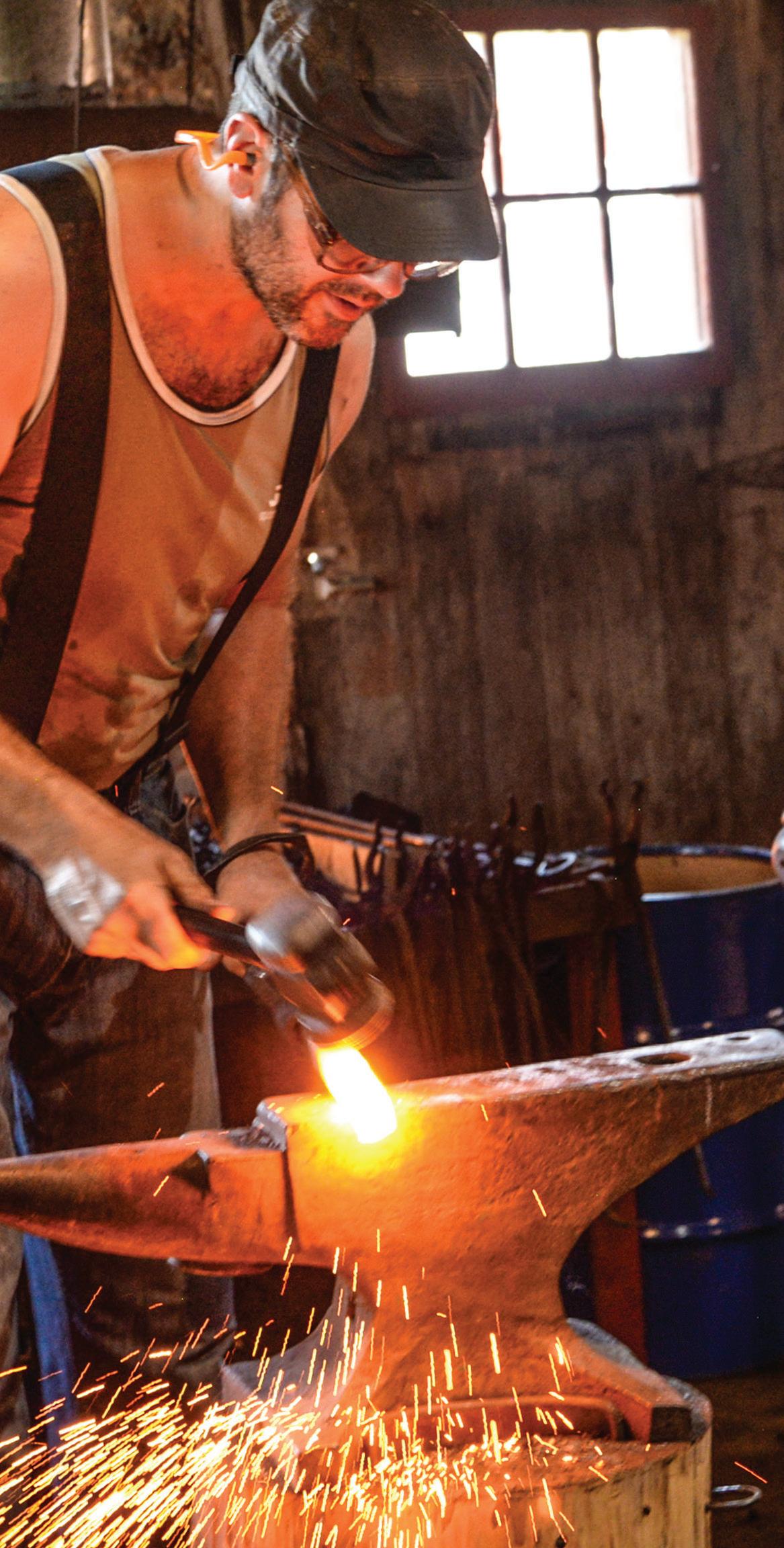



A relaxing lazy river 2 Tower Slides - The Kraken and The Hydra 2 Body Slides - The Jewel and The Pearl Children’s playscape with bucket dump Market Place - one-stop retail shop





LIVE THE HARBORLIFE






